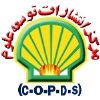Introduction to evapotranspiration
What is Evapotranspiration?
Evapotranspiration (often abbreviated ET) quantifies the amount of water that is lost from the soil and plants themselves due to weather conditions. ET is the sum of evaporation and transpiration.
Evaporation: the loss of water from the soil, to the air.
Transpiration: the loss of water from a plant’s leaves and body, the the air.
The amount of evapotranspiration will depend on the temperature, humidity, wind, amount of sun exposure, and the type of plant. ET is expressed in inches of water.
ET, describes the amount of water that is lost in the environment or surroundings; water is replenished via precipitation or rainfall, and irrigation.
What is Precipitation?
Precipitation(Rainfall), is the process by which all forms of water reach back to earth from the atmosphere. Precipitation occurs in the form of rainfall, frost, hail, and dew. Among all, rainfall and snowfall contribute a significant amount of water. Precipitation(Rainfall), is any form of liquid or solid water particles that fall from the atmosphere and reach the surface of the Earth. For the Gulf Coast area, precipitation includes drizzle, rain, hail, and on rare occasions, snow and sleet. Different seasons and geographic locations see varying amounts of precipitation in amount and intensity. Precipitation is caused when a mass of warm, moist air hits a mass of cold air. Condensation causes the moisture to form droplets that become rain or crystals that become snow or ice. When these droplets or crystals become too heavy to be suspended in the atmosphere, they fall to Earth as precipitation.

